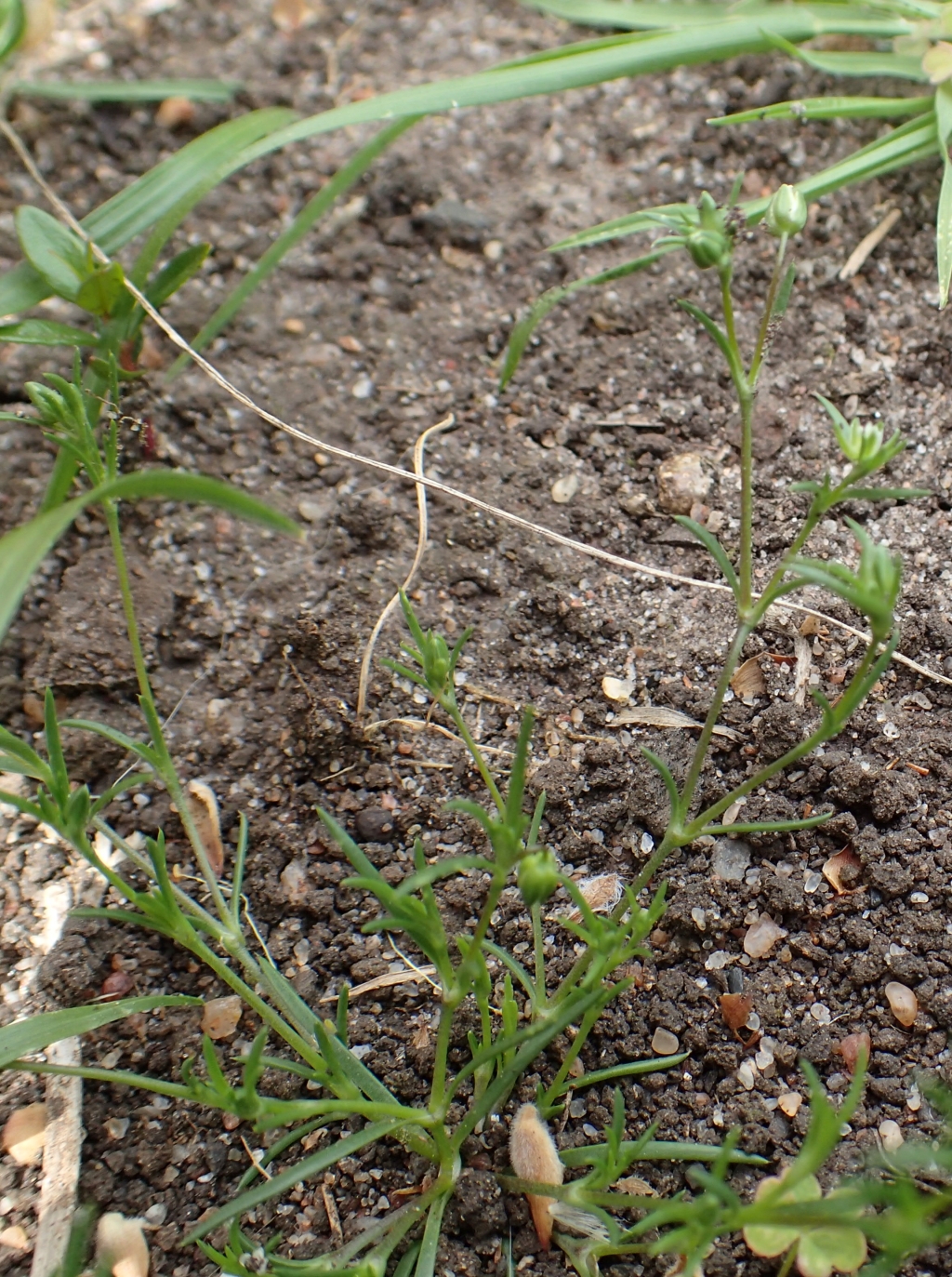Sagina apetala
Ard. Annual PearlwortAnnual with slender taproot, glabrous or sparsely ciliate and glandular. Stems erect or ascending from a withered rosette, 3–18 cm long. Leaves linear-subulate, aristate, more or less ciliate toward base, 3–10 mm long, 0.3–0.5 mm wide. Flowers usually 4-merous; pedicels erect, glabrous or glandular-hairy, 4–15 mm long; calyx glabrous, sepals ovate, concave and hooded, obtuse, widely spreading in ripe fruit, c. 2 mm long; petals minute or absent; stamens 4; styles 4. Capsule ovoid, equalling or exceeding sepals, to 3.5 mm long; seeds brown, oblique-reniform, more or less grooved dorsally, tuberculate, 0.2–0.4 mm diam Flowers Sep.–Jan.
LoM, MuM, Wim, GleP, VVP, VRiv, MSB, RobP, MuF, GipP, OtP, WaP, Gold, CVU, GGr, DunT, NIS, EGL, EGU, WPro, HSF, HNF, OtR, Strz, MonT, VAlp. Also naturalised WA, SA, Qld, NSW, Tas., Norfolk Is., Macquarie Is. Native to Europe, North Africa, western Asia, South America. A common and widespread ephemeral weed of cultivation, lawns, waste ground, stone- and brick-work throughout Australia.
Owing to the considerable independent variation exhibited by some characters in Australian material, infraspecific taxa cannot be used with any degree of confidence (cf. Clapham & Jardine in Tutin et al. 1993; Hegi 1962).
Adams, L.G. (1996). Caryophyllaceae. In: Walsh, N.G.; Entwisle, T.J., Flora of Victoria Vol. 3, Dicotyledons Winteraceae to Myrtaceae, pp. 228–271. Inkata Press, Melbourne.
 Spinning
Spinning




